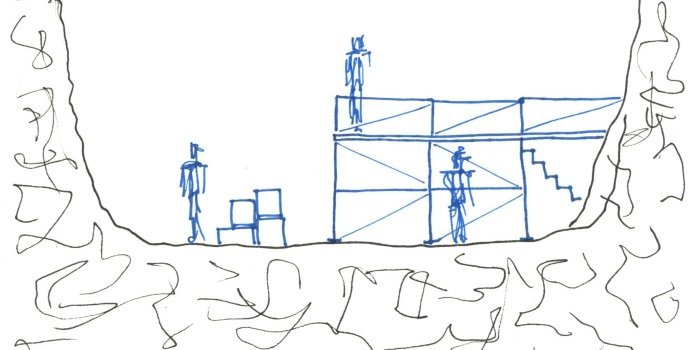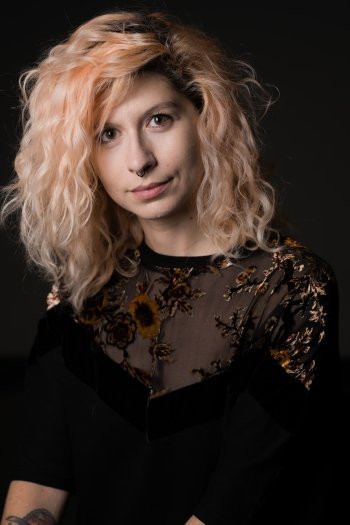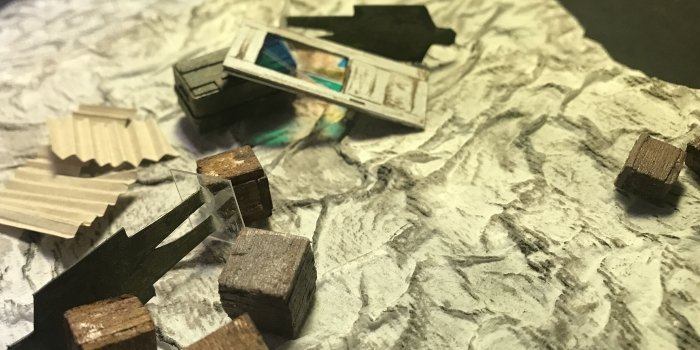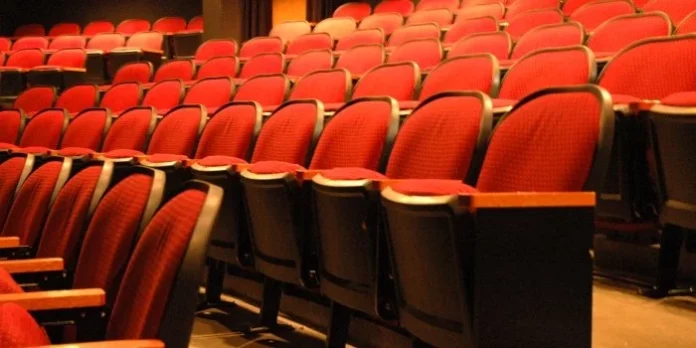In time for Remembrance Day, UBC Theatre and Film presents Timothy Findley’s The Wars.
Adapted from Findley’s 1977 Governor General’s Award-winning novel, The Wars is the story of 19-year old Robert Ross who trades his comfortable Canadian life for the harsh world of trench warfare in World War I.
Under the direction of Vancouver theatre artist and UBC alumna Lois Anderson, Timothy Findley’s The Wars is staged by the UBC Theatre and Film graduate class of 2020. Among them is scenic designer Cecilia Vadala, who is pursuing her MFA in theatre design and production.
In this Q&A with Vadala, we find out more about the artist and her process for designing for Timothy Findley’s The Wars.
This interview has been edited.
Where did your interest in stage design come from?
I was born and raised in a country that is famous for all its artistic expressions, and both my parents graduated from the Fine Arts Academy, so in a way, the love for the arts has always been part of my DNA.
Passionate about theatre, I pursued some acting and always been a fervent audience member.
My education took me on a little detour through philosophy and art history, where I focused my attention mainly on contemporary aesthetics and practices. And I had the opportunity to develop my creative skills by taking part in different projects – among others, I worked as a production designer for music bands, and in 2017 I started my own company offering product design, prop-making and custom sewing services to my clients.
I always looked for a place where I could pursue all my interests and apply my skills, and scenic design is where I find the perfect synthesis.
You are originally from Italy, what brought you to Vancouver?
Vancouver is a diverse and welcoming place full of opportunities. I first come to the city to visit some friends in the summer of 2008, and I quickly fell in love with it. The ocean and the mountains are a gorgeous background, but the people and the lifestyle are what make the difference.
When I finished my undergraduate studies in Italy, I was ready for a change, so in 2012 I packed my suitcase and moved here with my partner and my dog. I will not hide, it has been the hardest and most stressful thing that I ever did in my life, but I grew so much in the process and I got to achieve things I did not even imagine at the start of this adventure.

You also have a BA in Philosophy. Does this previous degree inform any of your work as a designer?
Most definitely. Through my BA in Philosophy, I developed my critical thinking and analytic eye, and that it is something with which I approach every step of the creative process.
Starting from reading the script, to the way I develop my research, I go back and forth between looking at the bigger picture and focusing on specific details. I think, a lot, probably too much. But the questioning of every idea and of every design choice is what pushes me forward. There is rigour in this process, and every element you see in my work have gone through a thorough critical analysis.
You’re now pursuing your MFA in Theatre Design and Production at UBC. What do you see yourself doing once you’ve completed the program?
I want to keep growing as a designer and refine my practice. I would love to design not only for theatre and bring my work to film, music and fashion. I truly enjoy the idea of having the chance of exploring different territories and feeding my creativity with inspirations from different kinds of projects.
I am looking forward to growing in the Vancouver community, as well as travelling abroad to expand my horizons and to be exposed to different design approaches.
Tell us about your process in creating the set design for The Wars. What inspired you?
Words, feelings and images are always the starting point of my creative process. I trust the words and I want my design choices to reflect the deepest meaning of the material I am working with.
The writing of both Timothy Findley’s book and Dennis Garnhum’s script is evocative and poetic, and I rely on it to guide me in my design discoveries.
As a scenic designer, the fluidity with which as an audience we are brought from one location to another, from a scene to a memorable moment is definitely something I focused on and that I wanted to be one of the key elements of my design.
How much leeway do you get as a designer in helping to bring the director’s vision to life, in this case with director Lois Anderson?
I have no amount of words to describe how wonderful it has been working with Lois.
We started our creative meetings for the show in August and our time together was key in developing the show under every aspect. Since the beginning, we embrace the collaborative nature of theatre and we allow every designer to contribute to the discussion. We all came into the room with different ideas and shared what were the aspects of the script that were important to us individually. The conversation grew organically, and we supported each other vision and choices.
I could talk with Lois for hours and hours about this show, and I can for sure say I will miss our conversations after closing night.

What was the most surprising thing you discovered during the creative process about The Wars that you’ve helped bring to the stage?
The beauty of theatre is that when you are working with a great director and a talented group of designers and actors you do not need much to deliver a lot, and I am constantly surprised by the power of the arts to bridge some of these gaps and shortages.
With this show, in particular, we addressed since the beginning the connection between the actors and the characters. We have a group of actors in their early 20s playing the roles of young soldiers of the same age. We decided to bring this aspect to the stage and designed a “preparation area” where we see the actors coming together to tell the story, to build each scene and to guide us to each transition.
The decision of reviling this concept on stage to the audience was the thread that helped us connect every moment, and the elegance of the execution is only adding more meaning to our message.
What was your biggest challenge in bringing your design vision to the stage for this production?
I often feel the word challenge has a negative connotation, but during this process what could be considered challenges were elements that actually inspired us to push our creative process forward.
For different reasons, we decided to step away from realism, and we focused on creating a world that transforms, evolves and suggests. We have some big elements and concepts, but the actual scenes and transitions are created and controlled by the actors that are fully in charge of those elements.
When working with this type of design you must embrace the journey of discoveries that starts in the first creative meeting and ends only at the very last rehearsal. Accepting and fully committing to this journey was probably the big step that everyone had to take to get to the final result you are now able to see on stage.
Is there something in particular audiences should look for in your design?
As a scenic designer, I love to work with textures and sculptural pieces. I am interested in the journey that every script brings us on, and I am dedicated to translating that journey in my designs.
The scenic design for this show has a journey of its own, it is a world that evolves and transforms as the story unfolds and that eventually gets pulled away under the feet of the characters. This is a suggestive and symbolic world that wants to catch the complexity of the story we are telling, not a mere account of young soldiers at war, but a layered exploration of the essence of life and the meaning of human connections.

Tell us why someone should come to see The Wars?
The Wars is a story about people, about love, and about what is left when humanity is stripped away. The message of this play is a message of hope for life. A message we consider important to remind one to persevere in this ever-changing world.
Timothy Findley’s The Wars plays the Frederic Wood Theatre (6354 Crescent Rd, University of British Columbia) November 7-23. Visit theatrefilm.ubc.ca for tickets and information.

